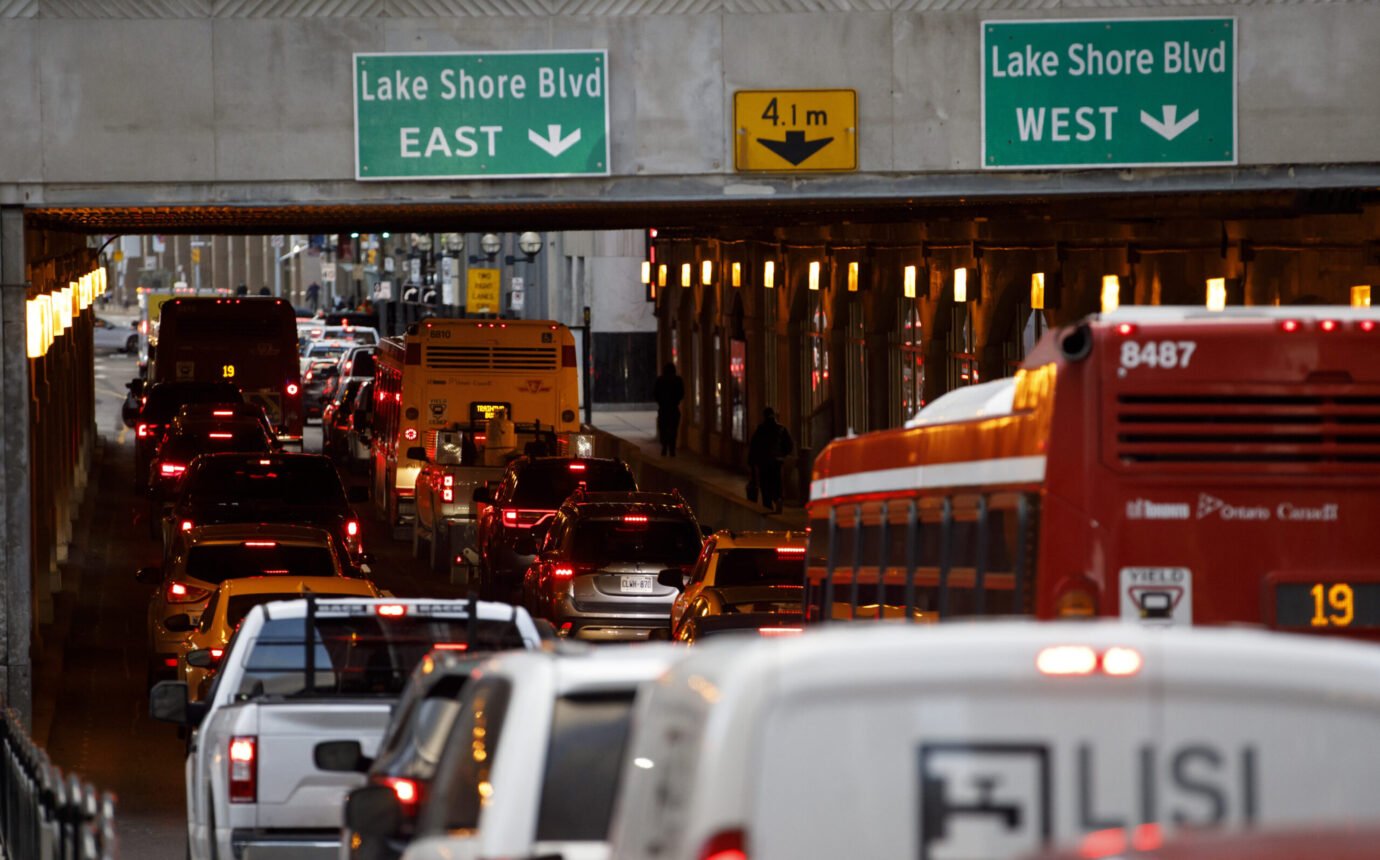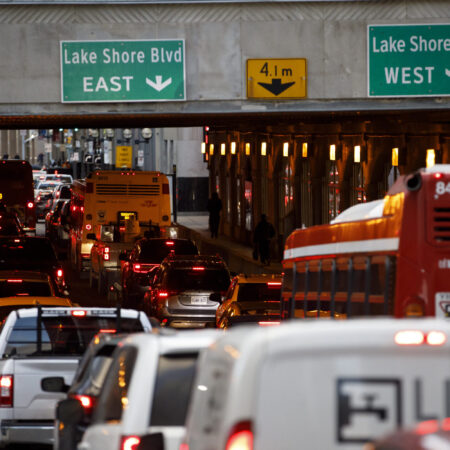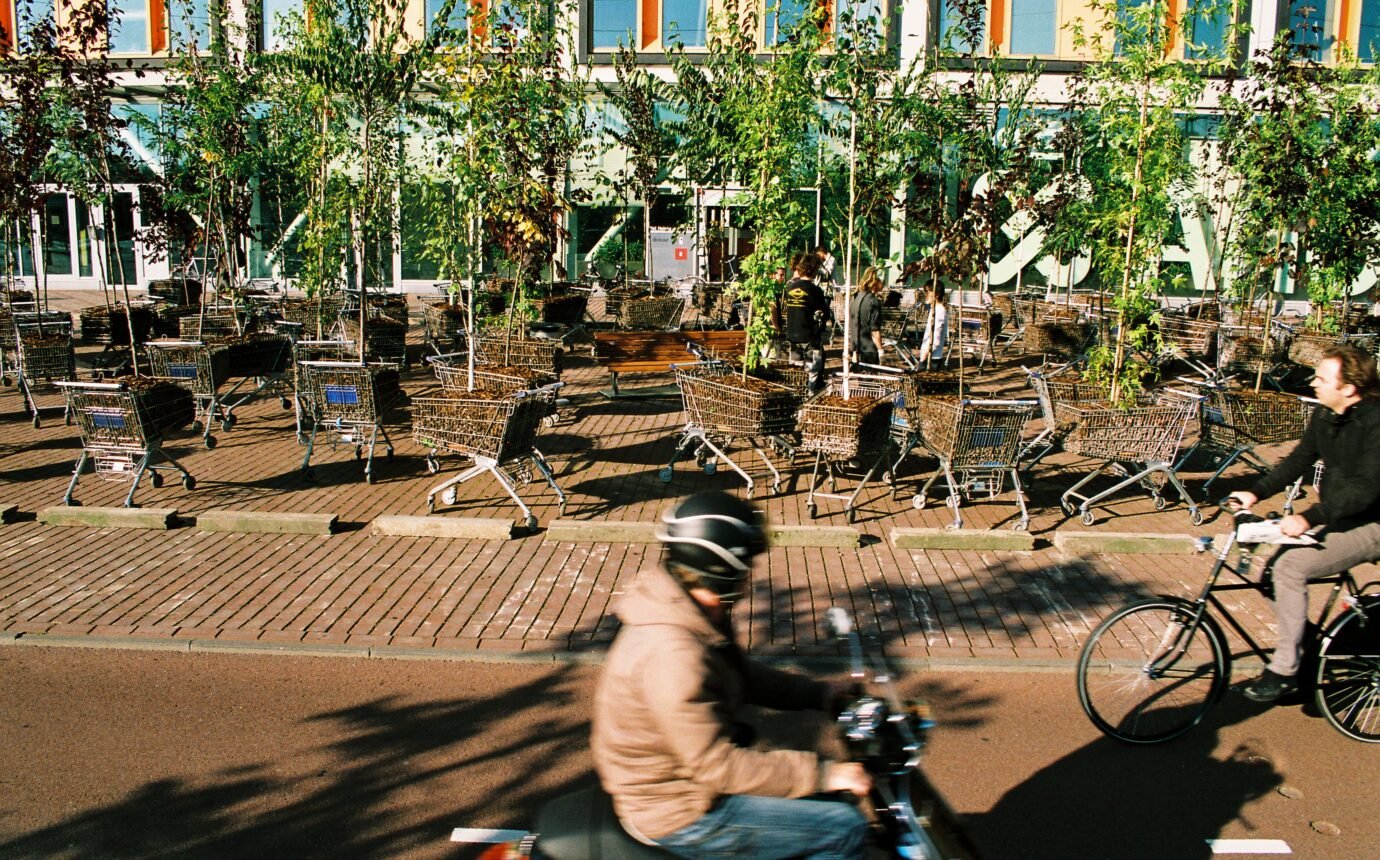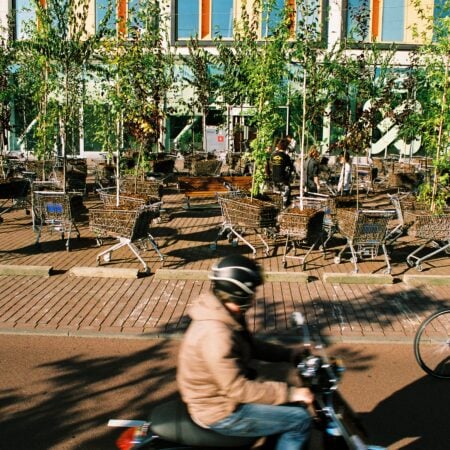Can Buses Solve Toronto’s Transit Crisis?


One planner’s hot take on how a redesigned bus network might solve the city’s transit woes
In the spring of 2021, a woman I’ll call Alice (who asked to appear in this piece under a pseudonym) was working on a set of guidelines for the Ontario Line—the 16-kilometre, $11-billion subway project, announced in 2019 and due to be completed before we’re all dead—when she found herself doubting everything she’d once believed. “I asked myself, Why are we even building subways?” Alice recalls. “I didn’t articulate this thought to anyone, because I didn’t want to lose my job.
I met Alice a few weeks ago to learn more about her crisis of faith. If she no longer believes in subways, I asked, what mode of transportation does she support? Gondolas? Bullet trains? Hyperloops? Her answer was less grandiose but more surprising: She believes only in busses.
I don’t share her love. I’m the kind of person who will walk 20 kilometres uphill in the snow to avoid taking a bus. Busses suck, I told Alice. They come irregularly. They move at the glacial pace of traffic. They’re crowded and jerky. They take circuitous routes. If you’re going to freeze waiting outdoors for the Jane Street bus at rush hour, you might as well be walking instead. Your body heat will keep you warm, and you could actually arrive at your destination on time.
Alice heard my complaints and then pointed out that none is a valid criticism of buses, per se. They are criticisms, rather, of the way we do buses in Toronto. But we could do things differently. We could streamline surface transit, she argues, prioritizing dependability over coverage. Right now, there are streetcars running two ways on Dundas Street. Walk 500 metres north or south, and you’ll find streetcars running two ways again, on either College or Queen. None of these routes has a dedicated lane, which means at peak hours—a period that now extends to most times of the day—the streetcars move at half the speed of an ox-drawn cart. All of this is reductant. If you’re hanging out at Dundas and Ossington and looking to travel eastward, you have three options within walking distance—none of them good.
Imagine a future Toronto transit system with fewer surface-transit routes overall but many more buses per route, all travelling on a dedicated lane. In this hypothetical city, you’d have to walk slightly farther than you do now to arrive at a bus stop. In return, you’d get something you can’t often get today: a dependably brisk ride to the next leg of your journey. Toronto, Alice adds, could build enclosed, heated stops to keep you comfortable during your short wait.
I told her that this last bit seemed farfetched. How much would we all have to pay? A lot, Alice conceded, but less than the cost of expropriating property for subway lines, litigating the expropriations in court, and constructing an entire network of tunnels and stations. Building a subway through a densely packed city is one of the most extravagant projects a transit department can undertake. Redirect that money, Alice argues, and you could create the most luxurious, well-serviced bus network imaginable.
And it would be flexible, too. Right now, Toronto subway planners are betting big on future developments at Exhibition Place, the Port Lands, and Flemingdon Park. The Ontario Line will stitch these far-flung locations together, under the expectation that they’ll soon become residential hubs. That’s probably true—the promise of a subway will make these regions attractive to developers—but does anyone know for sure? Is human geography really so predictable? Six years ago, did anybody predict, for instance, that a work-from-home revolution would make many downtown offices obsolete?
When you design bus routes, Alice points out, you don’t have to know the future. As city’s change, you can easily create new lines, and you can tailor services to fluctuations in rider behaviour. If the stretch of Sheppard Avenue between Yonge Street and Don Mills Road had a bus route on it, we’d surely be scaling service down in response to unexpectedly low demand. Of course, we built a subway on Sheppard instead, so now we’re destined to run sparsely populated trains along the corridor in perpetuity. “You can’t change lines,” Alice says. “Subways are inflexible.”
I find her argument hard to swallow, mostly because I love subways. They’re both vintage and futuristic. They combine the swashbuckling ambition of Robert Moses with the democratic cosmopolitism of Jane Jacobs. For Alice, though, my reverence is a form of sentimentality, one that has enthralled generations of planners, undermining their ability to do what’s best for their cities. And if romance is so important, she adds, we could easily romanticize our buses too. “Red double-decker buses are one of the top tourist attractions in London,” she says. “Surely, when it comes to Toronto transit, we could at least design a bus that people want to get into.” It’s hard to disagree with her there.




























